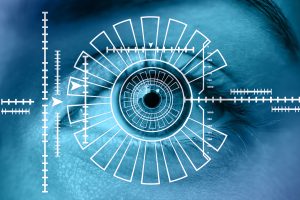By Chad Lloyd
 Have you ever met someone and thought to yourself, “They look just like someone else I know?” What allows us to look at someone and be able to recognize them? The reason that we can look at someone and distinguish them from others is due to their unique facial features and landmarks. In other words, they have unique spacing between different features on their face (such as the nose, mouth, eyes, etc.). We can even teach computers to recognize these features (facial recognition technologies) and relate them back to a known image of a person for identification purposes.
Have you ever met someone and thought to yourself, “They look just like someone else I know?” What allows us to look at someone and be able to recognize them? The reason that we can look at someone and distinguish them from others is due to their unique facial features and landmarks. In other words, they have unique spacing between different features on their face (such as the nose, mouth, eyes, etc.). We can even teach computers to recognize these features (facial recognition technologies) and relate them back to a known image of a person for identification purposes.
 A person’s distinct facial features are a biometric that can help distinguish one individual from another. Biometrics is the study of body measurements and calculations. Biometrics includes anything from fingerprints, iris recognition, and hand geometry, to voice recognition, gait detection (or how it looks when you walk), and facial recognition technologies. Biometrics are used for identification purposes because they are generally unique to a given individual. These different biometric technologies are extremely important when discussing issues of privacy and security. Many different agencies use these types of technology–including the FBI, CIA, and Homeland Security–to prevent intruders and criminals from obtaining confidential information.
A person’s distinct facial features are a biometric that can help distinguish one individual from another. Biometrics is the study of body measurements and calculations. Biometrics includes anything from fingerprints, iris recognition, and hand geometry, to voice recognition, gait detection (or how it looks when you walk), and facial recognition technologies. Biometrics are used for identification purposes because they are generally unique to a given individual. These different biometric technologies are extremely important when discussing issues of privacy and security. Many different agencies use these types of technology–including the FBI, CIA, and Homeland Security–to prevent intruders and criminals from obtaining confidential information.
While there are many different biometric technologies available, some are becoming common in everyday devices. Biometrics are increasingly incorporated with artificial intelligence (AI) in many of our favorite devices including phones, laptops, and tablets. Most of these biometrics function by recognizing a pattern (whether it is a pattern on your face, eye, fingerprint, etc.) and then matching up that feature when you go to unlock your device or use an application. For instance, many phones will use your fingerprint to initially recognize unique patterns through a sensor and store them within the device; when you wish to use the device, you must place your finger on the sensor and it will match up your unique patterns to the patterns stored on the phone. If there is a match  then, it will unlock–if not, then the device will remain locked. With the advancement of cellular devices and need for hands free phone systems while operating cars, artificial intelligence has been incorporated into a number of different platforms. With further development of AI’s such as Apple’s Siri, Amazon’s Alexa, Microsoft’s Cortana, and Google’s Google Assistant, there has been an advancement in smart home systems as well! These systems use voice recognition technologies to follow commands that are given to it. They can even be used to play games! My sisters and I use our Google home to play trivia with our friends. While we are far from the future of flying cars (or perhaps maybe not!), there have been plenty of useful advances made in other realms of artificial intelligence.
then, it will unlock–if not, then the device will remain locked. With the advancement of cellular devices and need for hands free phone systems while operating cars, artificial intelligence has been incorporated into a number of different platforms. With further development of AI’s such as Apple’s Siri, Amazon’s Alexa, Microsoft’s Cortana, and Google’s Google Assistant, there has been an advancement in smart home systems as well! These systems use voice recognition technologies to follow commands that are given to it. They can even be used to play games! My sisters and I use our Google home to play trivia with our friends. While we are far from the future of flying cars (or perhaps maybe not!), there have been plenty of useful advances made in other realms of artificial intelligence.
 Many phones have different technologies built into them for security purposes. Both the Apple and Android platforms have incorporated different biometric systems in their devices and in different applications to improve security and privacy. Samsung has incorporated iris detection technologies into their devices to help boost their privacy by identifying a person based on features located within their eye (as seen on the right). While many different phones have previously incorporated fingerprint recognition technologies, a new move has been made in the direction of facial recognition technologies. Facial recognition technologies have been shown to be more secure than other biometrics. However, one of the faults of these platforms is that they solely focus on one biometric. By incorporating many different biometrics together, these systems could become much more secure.
Many phones have different technologies built into them for security purposes. Both the Apple and Android platforms have incorporated different biometric systems in their devices and in different applications to improve security and privacy. Samsung has incorporated iris detection technologies into their devices to help boost their privacy by identifying a person based on features located within their eye (as seen on the right). While many different phones have previously incorporated fingerprint recognition technologies, a new move has been made in the direction of facial recognition technologies. Facial recognition technologies have been shown to be more secure than other biometrics. However, one of the faults of these platforms is that they solely focus on one biometric. By incorporating many different biometrics together, these systems could become much more secure.
Edited by Christina Marvin and Sam Stadmiller
